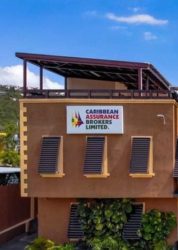Scotia Investments jumps $2.60
Scotia Investments jumped $2.80 to close at $26.15 and was the biggest mover on the day trading 8,805 units, all at $26 or above. Grace Kennedy had a bid of $56 closed which was higher than the last sale price and ended up with a gain of $0.55 to close at $55.55 having traded at a high of $56. Scotia Group closed at $22 up 79 cents on the day, Sagicor Life made amends for the fall yesterday by putting on 40 cents to close at $8. Lasco Financial Services gained 19 cents to close at $7.99, the stock traded at an all-time high today of $8. Carreras gained 50 cents to close at $57.
Advancing stocks continue to out-pace declining ones by more than 2 to 1 with 9 ordinary shares advancing to 4 falling.
 J$34.1 million invested in 4,282,236 units of stocks traded on the Jamaican dollar segment of the market. US$947,000 was expended in the US dollar market in trading on Thursday.
J$34.1 million invested in 4,282,236 units of stocks traded on the Jamaican dollar segment of the market. US$947,000 was expended in the US dollar market in trading on Thursday.
Proven Investments accounted for 8,578,641 shares valued at US$947,939.83 in the US market. Just one trade took place in the stock, with Pan Caribbean Financial Services handling both sides of the trade. Data indicates that they did it on behalf of clients. The main market index and the All Jamaica Composite index recovered all the points lost yesterday, and more, in today’s trading.
Grace Kennedy traded 205,745 shares valued at $11.44 million between $55.55 and $56. Access Financial Services lost 10 cents in trading 1,363,200 shares valued at $9.54 million. Mayberry Investments crossed 1.316 million units which they bought for in-house purposes. Gleaner Company traded 2,073,109 units with a value of $2.49 million. The entire Gleaner trade was handled by NCB Capital markets on behalf of clients. NCB closed down 20 cents to $17.80 on 139,292 units valued $2.5 million. Sagicor Investment saw 104,521 units changing hands for $1.62 million, Proven’s 8% preference shares traded 470,377 worth $2.39 million, all traded at $5.09 up 6 cents on the day.
Bullish signs persists | There are still bullish signs being reflected in prices on the market with quite a few stocks still having bids that are higher than the last selling price.












